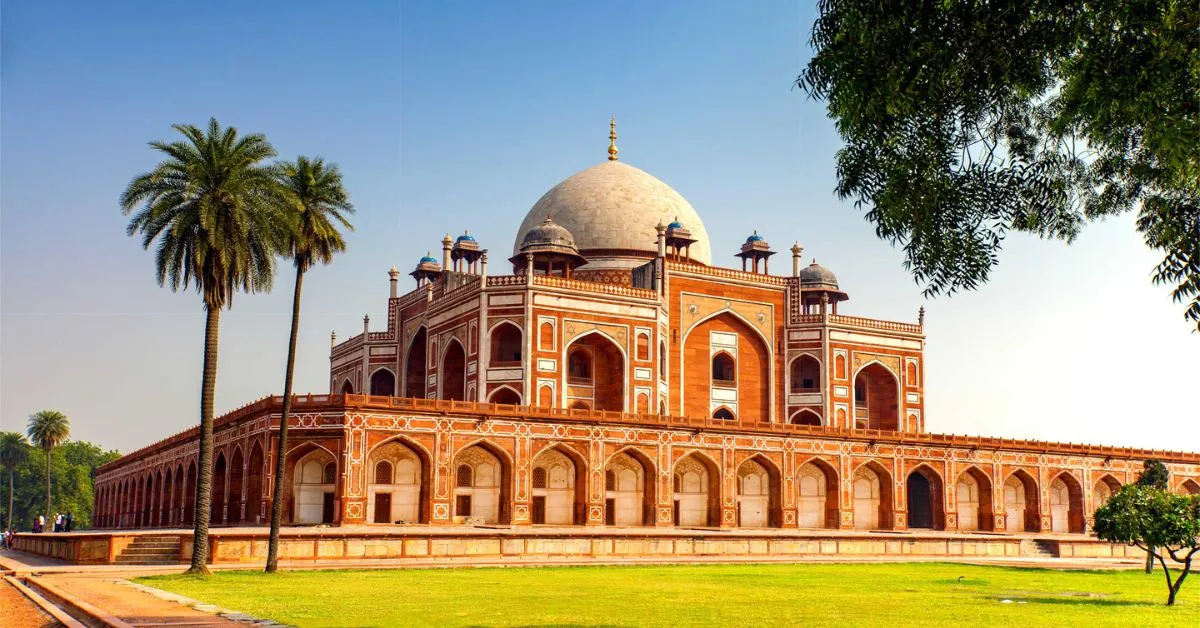Delhi, the capital city of India, is not just a political powerhouse—it's an architectural gallery that chronicles centuries of design evolution. From Indo-Islamic marvels to cutting-edge modernist statements, the city offers a blend of structure, story, and soul. Whether you're a student of design, a history enthusiast, or simply someone who appreciates beauty carved in stone, this curated list of 10 architectural gems in Delhi is your ultimate guide for 2025.
To explore even more architectural sites, check out this extended list: Architectural Places to Visit in Delhi.
1. Humayun’s Tomb – Mughal Geometry in Motion

Built in 1572, Humayun’s Tomb marks the beginning of grand Mughal architecture in India. Commissioned by Bega Begum, the tomb combines Persian aesthetics with Indian craftsmanship. Its symmetrical gardens, water channels, and red sandstone façade reflect perfect geometric harmony. A precursor to the Taj Mahal, it exemplifies how space, symmetry, and sacredness converge into a timeless design.
2. Qutub Minar Complex – Monumentality and Ornament

The Qutub Minar complex is a fascinating blend of religious, imperial, and aesthetic influences. The 73-meter-high minaret stands as a towering statement of Indo-Islamic architecture, but don’t overlook the detailed carvings on the Iron Pillar or the Quwwat-ul-Islam Mosque. This space isn't just about vertical scale—it's also a rich canvas of calligraphy, light, and shadow.
3. Bikaner House – Adaptive Reuse Done Right

Once a princely residence, Bikaner House has transformed into a vibrant cultural hub and design venue. Its quiet colonial façade hides a beating heart of modern art exhibitions, design festivals, and curated lifestyle experiences. It’s a textbook example of adaptive reuse—preserving heritage while embracing contemporary function.
4. Lotus Temple – Modernism Meets Metaphor

Designed by Iranian architect Fariborz Sahba and completed in 1986, the Lotus Temple uses 27 marble-clad petals to form its striking floral shape. A Baháʼí House of Worship, the building celebrates unity and openness—free from religious icons or barriers. Its form is both functional and philosophical, capturing the purity of nature through minimalistic design.
5. Jawaharlal Nehru Stadium – Structure as Statement

More than a sports venue, the Jawaharlal Nehru Stadium is a lesson in structural engineering. Originally built in 1983 and renovated for the 2010 Commonwealth Games, it features tensile membrane roofing and a steel compression ring, turning functionality into a sculptural statement. It’s architecture in motion—ideal for lovers of bold, modernist design.
Why it matters in 2025: With India hosting increasing international events, this stadium continues to evolve as a civic landmark and structural icon.
6. Sunder Nursery – Heritage Urbanism and Landscape Architecture

A 90-acre masterpiece blending Mughal-era monuments with curated botanical gardens, Sunder Nursery is a triumph of urban conservation. Designed by landscape architects at Shaheer Associates, it integrates ecology, history, and community. Meandering water channels, shaded walkways, and native plantations make this a serene escape—and a model for heritage urbanism.
Final Thoughts: Architecture as a Time Machine
Delhi’s architecture is a reflection of its layered identity—from ancient dynasties to modern republics, colonial legacies to contemporary aspirations. Each building is a chapter in the city’s evolving design narrative. In 2025, take time to walk slower, look deeper, and appreciate these architectural marvels not just as tourists, but as thoughtful observers.
Want more architectural inspiration? Explore this rich source: Architectural Places to Visit in Delhi




